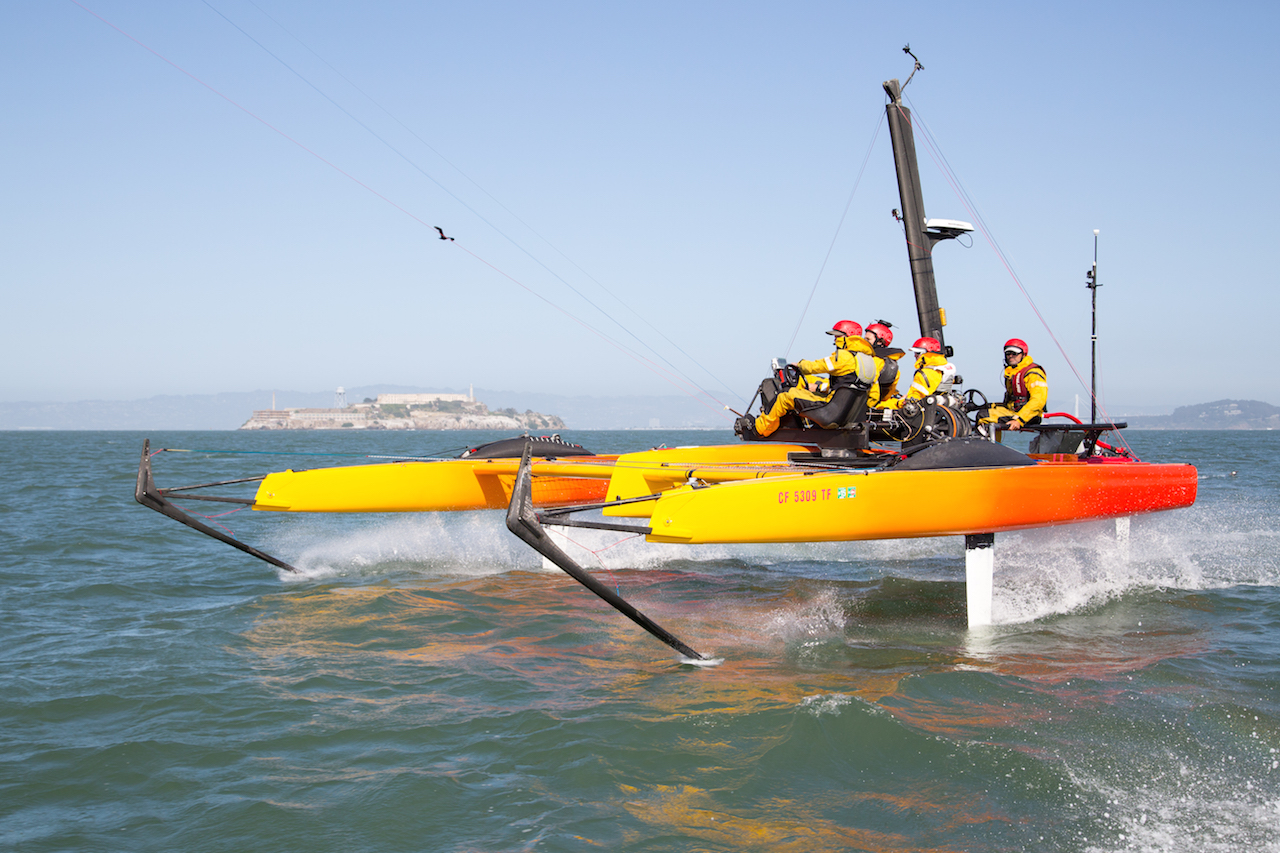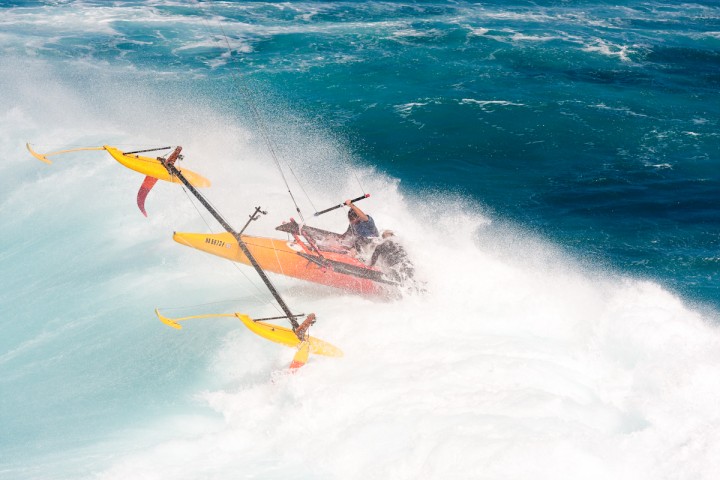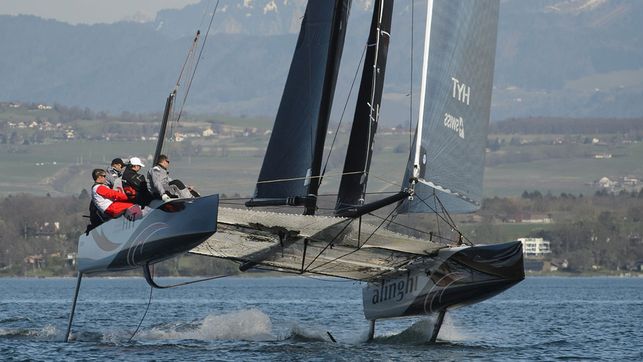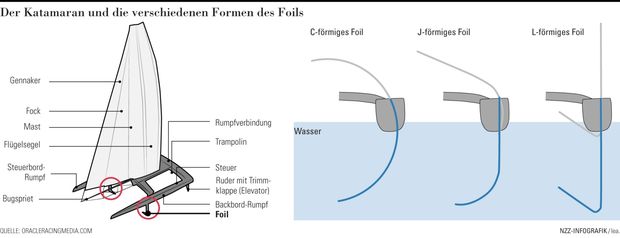… he is the father of the Kiteboat Project.
from Forbes by Bill Springer.
I met Don Montague on a seductively fast catamaran in St. Martin earlier this Spring. But it wasn’t until the next day when he returned to the boat with a team of very smart, and very talented guys, and a bonafide boatload of sensors, electronic equipment, computers, cameras, and a crazy-fast chase boat, that it became obvious that he wasn’t just another sailor. In fact, I was soon to learn he’s the world-champion windsurfer who went on to literally help invent kiteboarding with Robby Naish and others. And oh yea, he also helped found a “little” alternative energy company—Makani Power—that was acquired in 2013 by Google and is now part of the Google [x] team that’s working to make widespread clean energy a commercial reality.

Ocean Images/GUNBOAT
But after a fantastic day spent sailing on the turquoise blue waters of Marigot Bay, we didn’t talk about any of that. In fact, what Don and his team have accomplished is pretty widely known in windsurfing and kite surfing circles, so we didn’t need to. Instead, he talked with the clear-eyed passion of a true pioneer about the speed and power that’s possible when you attach an extremely efficient kite and intricate control system (that of course Montague and his team have invented from scratch) to an extremely light and strong hydrofoiling hull (ditto) that’s capable of mind-boggling speeds and precise control.
“Have you heard about the Kiteboat Project?” he asked.

Credit Kiteboat Project
“We use a kite instead of sails for power and the boat we’re testing these days on San Francisco Bay sails pretty comfortably at well over 30 knots. We’re constantly testing and refining and improving. You should come check us out.”
Now, that’s an invite you just don’t get everyday. I was on a plane to San Francisco almost as soon as we returned from St Martin.

Credit Kiteboat Project
Montague and a team of equally inspired inventors have been attaching kites to boats since the mid-1990’s and they have been improving their designs continually since then. They first developed kites to use on surfing canoes and small catamarans. And there are tons of photos and videos of Don and his long-time sailing partner and boat designer Joe Brock punching through huge surf and completing crossings between islands in Montague’s native Hawaii.

Don was simply “holding on” to the kite controls in the early days. Credit Kiteboat Project
They’ve developed countless hull, foil, kite, and control systems that they test in the rugged conditions in San Francisco Bay and the big swells of Hawaii. The boat I sailed on in San Francisco with Don and Joe is the prototype of a much bigger boat that they hope to will be able to sail from California to Hawaii (well over 2,200 miles) in less than 3 days. And for those of you who don’t know about sailing records, that’s simply insane! The current record is well over 5 days. So, what is it like to sail?
Unlike anything I’ve ever experienced on the water.

That’s yours truly smiling with the white sunglasses on. You’d smile too if you were sitting in that seat. Credit Kiteboat Project
First off, we suited up with high tech gear to keep us dry and helmets equipped with full radio communications so we could talk to each other over the sound of the wind. (To get an idea of the sensation and sound of sailing at over 30 knots, put your head out a car window going 35-40 miles per hour.) Then, after a quick tow from KiteBoat’s dock space in Alameda, Don and Joe launched the kite (letting out the line from the boat’s short mast) and Don controled the kite from his custom-made carbon fiber chair while Joe steered in the seat next to him. Don then simply said “Ready?” dipped the kite down into its “power zone” and we took off faster than any other sailboat I’ve ever been on. The kite literally pulled the boat up on to its foils and the speeds jumped from 10 knots to well over 20 knots almost immediately. The black wands on the bows constantly adjust the foils to keep them at the proper angle to insure level flight through the water, and as you can see in the photos and videos, the entire “control center” (the three side-by-seats) of the boat rotates so that the “kite flyer” i.e. Don in the middle seat is always facing the kite (as opposed to facing where the boat is headed). And the speed? It’s intoxicating. After only spending a few days drag-racing past Alcatraz and under the Golden Gate Bridge with Don and his team, I have a whole new concept of speed. They’re exploring the limits of kite propulsion as we speak, and wait till you see what technological advancements they’re working on now. Already there are reports of computers being able to fly a large kite better than a human can, and soon sailing at 30 knots will be as common as…electricity. Remember Google [x] and the quest for clean energy? Those guys are currently building huge carbon fiber kites/wings (not too far from where Kiteboat is located) that are obviously inspired by Don’s kites, and are reportedly capable of creating a huge amounts of energy at a fraction of the cost and impact of other wind energy systems. And as I can report first hand, kites seem capable of creating more power from the wind than anything else.
When he’s not sailing or pushing a baby stroller all over New England, Bill Springer covers superyachts, offshore adventure, luxury travel, and technology. Follow him on Twitter or LinkedIn.




